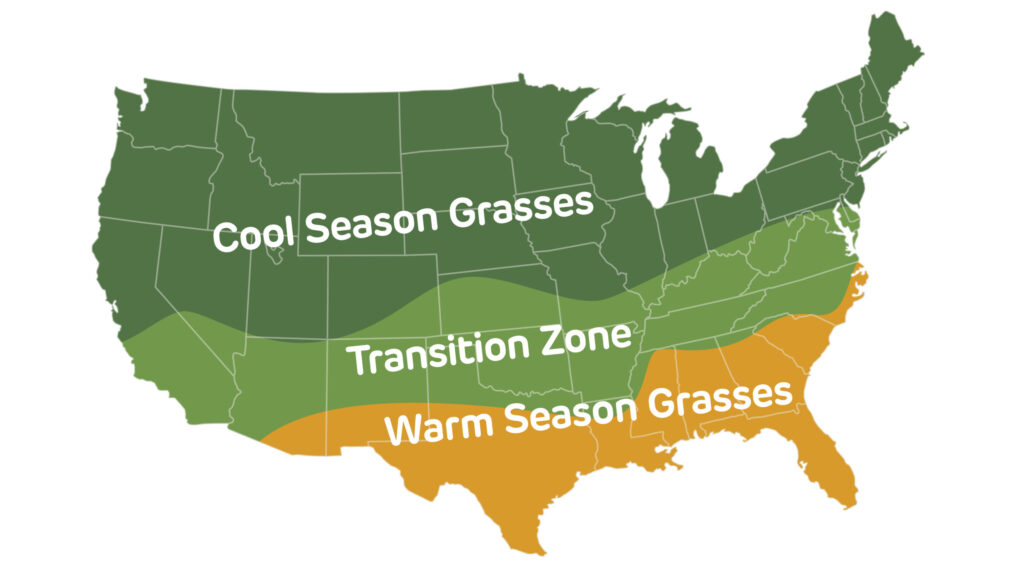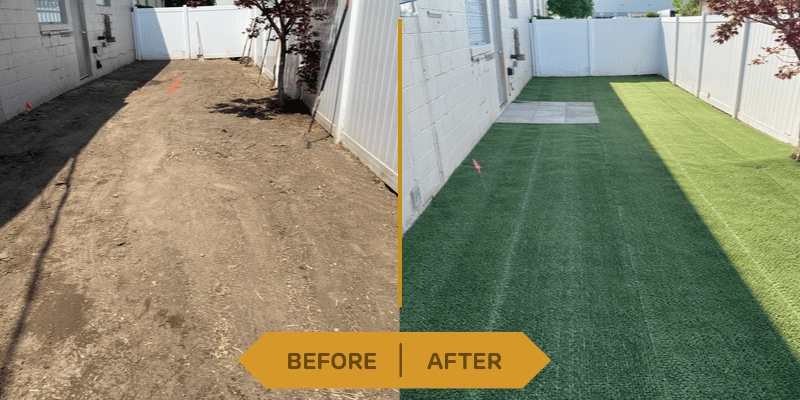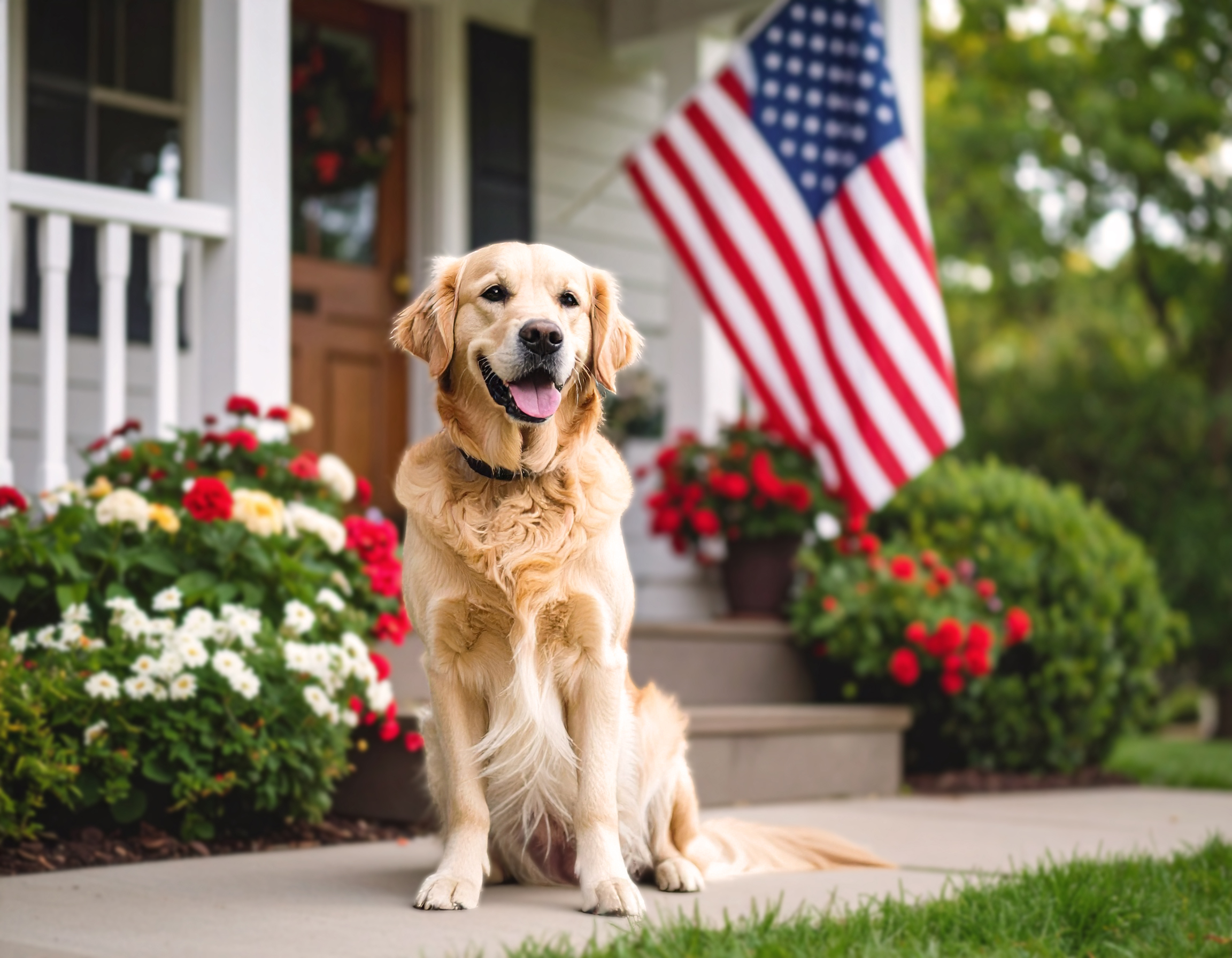4th of July Sale ** 15% OFF ** Coupon Code: COOLPAWS15 Valid July 3 - 17, 2025


Fall is almost here and that means grass planting season for much of the country. Natura works as a ground cover with or without grass, but many users enjoy the hybrid experience of grass growing through Natura to prevent mud and bare spots. We wanted to extend a little grass growing know-how to help you get the yard you’ve always dreamed of.
The first thing you want to find out is whether your yard is composed of warm or cold season grass seed. But what’s the difference? While both types of grass share some similarities in their maintenance, their active growing seasons don’t coincide and that means how you treat your yard in the fall will depend on what type of grass you have.
Warm season grasses actively grow starting in late spring and go dormant early or mid-fall. That means that warm season grasses grow strongest and greenest in late spring and begin to go brown around mid-fall. Warm season grasses include:
Cool season grasses actively grow starting around mid-spring and stay green longer into the fall. By late fall, cool season grasses go dormant. Cool season grasses also often go dormant in the summer heat if they don’t receive regular watering—giving many cool weather grass yards two distinct growing seasons: one in mid spring and one in fall. Cool season grasses include:

This map gives a handy guide to the type of grass that’s probably in your yard, but if you want to get really specific, check out the USDA Plant Hardiness Zone Map. As you can see, warm season grasses make up a significantly smaller percentage of the total area of the U.S. Additionally, much of the U.S. is in the so-called “transition zone.” Yards in the transition zone sometimes are composed of warm season grasses and sometimes cold season grasses but are often a combination of both seasonal grass types in order to stay green for as long as possible in an environment not necessarily suited to either type of grass.
Let this map serve as a handy reminder, but what matters is what’s in your yard. Take some time to think back on how your grass has grown over the past year or two to determine whether your lawn is composed of warm season or cool season grasses, comparing it to the seasonal characteristics above.
A handy trick is to dig out a small area of grass and check out the roots. Warm season grasses typically spread wider than cool season grasses. This means that when you dig out a section of warm season grass you’re likely to find a wide-reaching root structure composed of above-ground roots (stolons), below-ground roots (rhizomes), or both. Stolons are particularly likely to indicate warm season grass varietals. Cool season grasses tend to “bunch up” rather than “reach out.” (Note: Kentucky Bluegrass is a notable exception to this tendency. It is prized for its uncharacteristically robust rhizome structure for a cold season grass.)
When you buy grass seed, you’ll want to match the seed to the existing grass species in your yard by following a readily available grass identification guide. It’s also perfectly acceptable to simply match your seed’s growing season with your yard’s regular growing season. We don’t judge.
When you have a dog, your yard undergoes added stresses from paw traffic to urine stains. You want a grass that can withstand those stresses. But the obverse can be true too: your grass could hurt your dog. Certain grasses shed spiky “grass awns” that can pose a serious hazard to your dog’s health. These awns are bristly reproductive appendages shed by the grass plant.
The problem with grass awns is that they are sharp, and the bristles act as barbs. When an awn makes its way between your dog’s paws, under their skin, or in their nose, the bristles make it extremely difficult to remove. These awns can make their way throughout a dog’s anatomy, with possibly life-threatening outcomes including infection. But what kind of grass is dangerous for dogs?
To protect your pets, avoid these species:
If you want a grass that can withstand your pawed pal’s playtime, you have a few options. On the cool season grass side of things, Kentucky Bluegrass, as mentioned above, produces a thick woven structure that stands up to foot and paw traffic. Fescue is another cool season option with high durability and low maintenance requirements.
On the warm season side, Zoysia is a durable grass that produces a thick, soft lawn and requires little watering. While Zoysia is slow-growing, Bermuda grass, on the other hand, is fast-growing as well as durable.
Regardless of what grass you choose, you can up your yard’s durability with Natura hybrid turf. Simply attach the matting to your yard and grass grows right through. With Natura, your yard is more durable to heavy paw traffic and those paws will be less muddy. With Natura, just about every grass species can stand up to playing pups.
If your yard is made up of cool season grass, fall is the perfect time to reseed. Warm season grasses, on the other hand, benefit from being planted when temperatures are higher. So now is the time to toss out some cold season grass seed and prepare your yard or outdoor space for the cold season ahead. Of course, if you’re really worried about a bare spot or two on your warm season grass yard, you can reseed with warm season grasses in the Fall, but warm season grasses will perform better in warmer environments.
(Pro tip: you can also overseed your warm season grass lawn with cold season seeds in the late fall to prevent your warm season yard from going completely brown.)
Here are a few more small maintenance actions that you’ll be glad to have done once winter and spring come around:
Armed with a trusty rake and a little grass knowledge, we hope you’re ready to make your yard the best it can be. If you’re looking to take your yard or outdoor space to the next level, Natura is a great way to keep your yard looking its best no matter the weather. When you’re mowing, dragging tarps, and stepping over your yard this fall, Natura helps to protect the grass where it’s most sensitive, at the crown. Even if your warm season grass goes completely brown over the winter, Natura hybrid turf maintains a green and grassy appearance.
Visit our products page to see how Natura can improve your outdoor space.
Subscribe
to our newsletter
Recent Posts
Contact us:
2381 Centerline Industrial Drive
St. Louis, MO 63146
Quick Links
© 2025 GrassWorx, LLC. All Rights Reserved. Natura® is a registered trademark of GrassWorx, LLC. St. Louis, MO 63146.

Let's keep that shopping cart on ice for you for a bit. Enter some basic information and we'll keep your items in your cart while you think things over.

Valid on all products purchased on natura-turf.com
July 3, 2025 – July 17, 2025